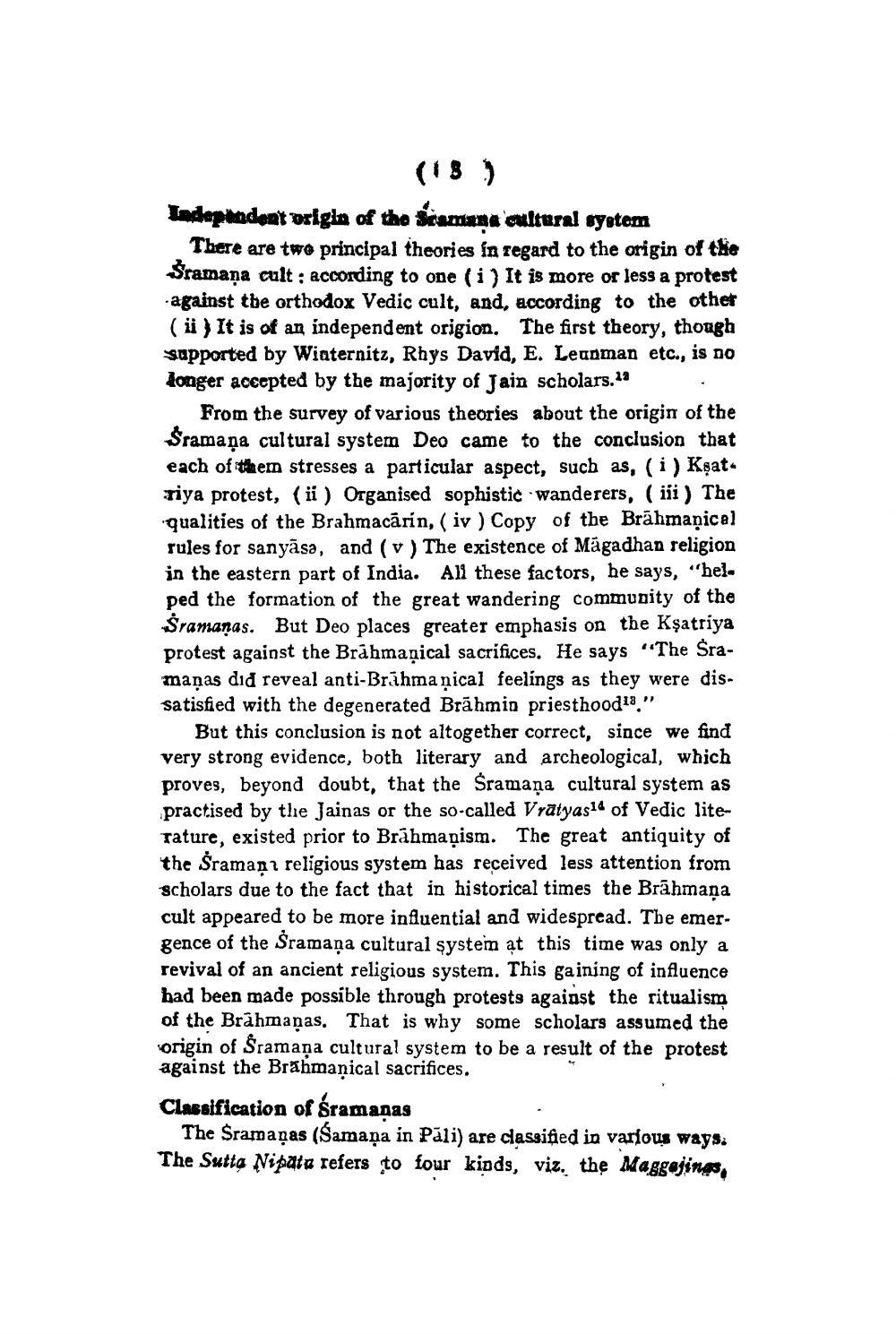________________
(18) Independent origin of the scomuna cultural system
There are two principal theories in regard to the origin of the Sramana cult : according to one (i ) It is more or less a protest against tbe orthodox Vedic cult, and, according to the other (ii) It is of an independent origion. The first theory, though supported by Wiaternitz, Rhys David, E. Leuoman etc., is no longer accepted by the majority of Jain scholars.1a .
From the survey of various theories about the origin of the Sramana cultural system Deo came to the conclusion that each of them stresses a particular aspect, such as, (i) Kşat. tiya protest, (i ) Organised sophistic wanderers, (iii) The qualities of the Brahmacãrin, (iv) Copy of the Brāhmanical rules for sanyasa, and (v) The existence of Māgadhan religion in the eastern part of India. All these factors, he says, "helped the formation of the great wandering community of the Sramanas. But Deo places greater emphasis on the Ksatriya protest against the Brāhmanical sacrifices. He says "The Sramanas did reveal anti-Brāhmanical feelings as they were dissatisfied with the degenerated Brāhmio priesthood13."
But this conclusion is not altogether correct, since we find very strong evidence, both literary and archeological, which proves, beyond doubt, that the Sramana cultural system as practised by the Jainas or the so-called Vratyasld of Vedic literature, existed prior to Brāhmaṇism. The great antiquity of the Šramanı religious system has received less attention from scholars due to the fact that in historical times the Brāhmana cult appeared to be more influential and widespread. The emergence of the Sramana cultural system at this time was only a revival of an ancient religious system. This gaining of influence had been made possible through protests against the ritualism of the Brāhmaṇas. That is why some scholars assumed the origin of Sramana cultural system to be a result of the protest against the Brahmanical sacrifices. Claesification of śramanas
The Sramaņas (Samana in Pāli) are classified in various ways. The Sutta Nipate refers to four kinds, viz. the Maggejings,




